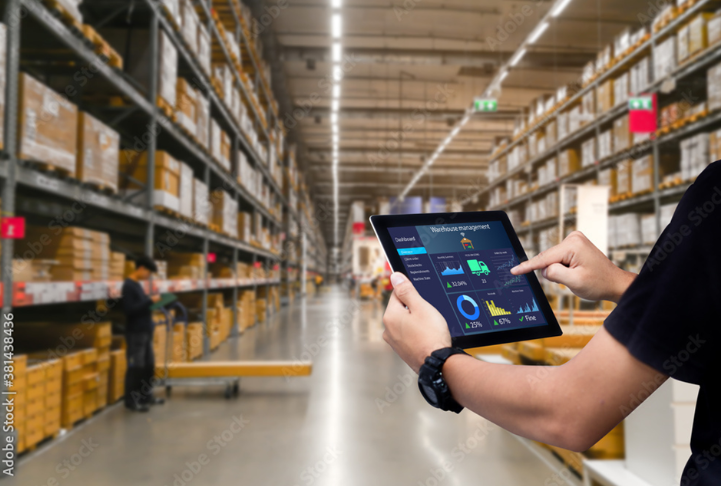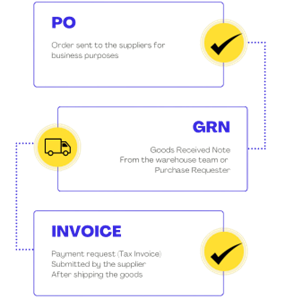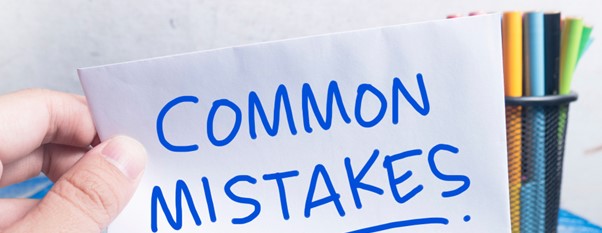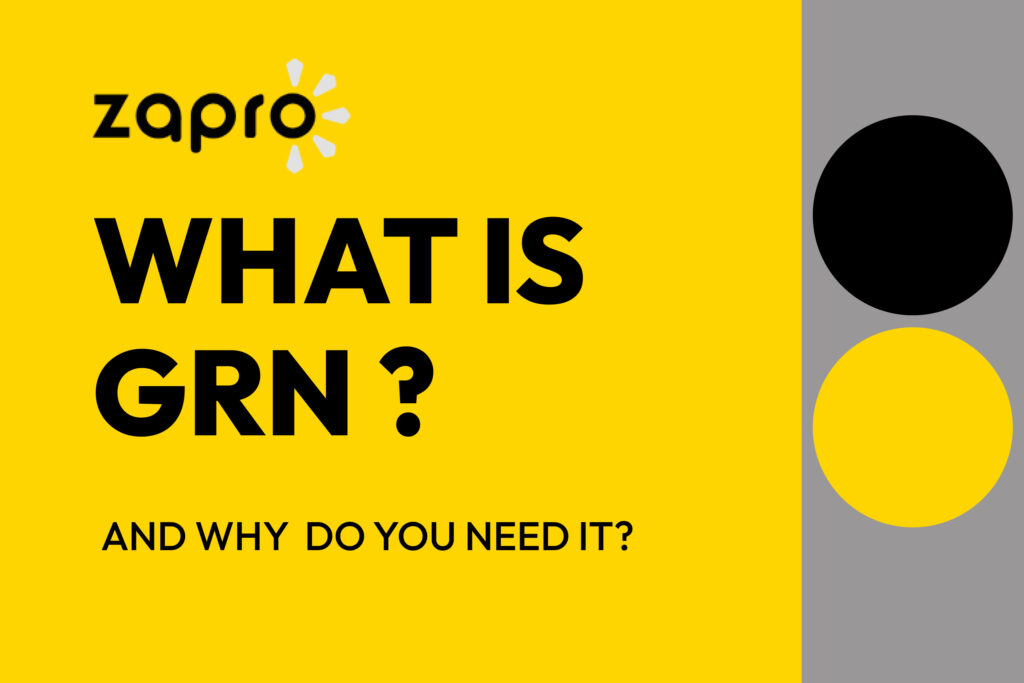In the bustling world of business transactions, efficiently managing the inflow of goods is as critical as breathing for survival—it’s where the magic of a Goods Received Note (GRN) comes into play! Imagine a world where every delivery to your business is received with a golden ticket that ensures what you ordered is what you get. That golden ticket, dear reader, is the GRN.
This paperwork is not just administrative fluff; it’s the unsung hero that bridges your procurement team with your finance department, ensuring that every item received by a receiver matches the supplier’s invoice and fulfills the procurement order. With a GRN in hand, the risk of discrepancies and errors in delivery and invoicing can immensely decrease, making it a cornerstone document in the realms of grn accounting and supply chain management.
Diving into the realms of what a GRN is and why you absolutely need it, our journey will unravel the essentials of this document, from its anatomy to its pivotal role in goods receipt note practices and finance department dynamics. You’ll discover not just the nuts and bolts of preparing a GRN but also how to wield it effectively to ensure your grn book is as pristine as your inventory management. We’ll guide you through crafting a flawless GRN, managing your GRNs like a seasoned receiver, and navigating the sometimes tumultuous relationships with suppliers with grace and accuracy.
Buckle up as we embark on this enlightening journey to demystify the GRN process and arm you with the knowledge to make your procurement and delivery note management seamlessly efficient.
What is Goods Received Note
A Goods Received Note (GRN), sometimes referred to as a goods receipt note, is a crucial document in the procurement and supply chain process. It serves as a two-way document that not only acknowledges the delivery of goods by a supplier but also confirms their receipt by your organization
This document is integral in ensuring that both parties—buyer and supplier—have met their obligations as per the purchase agreement.

Key Functions of GRN
1. Proof of Transaction: Primarily, a GRN acts as a tangible proof of the transaction between you and the supplier. It confirms that the ordered items have been delivered and are now physically present
2. Quality Validation: Upon the arrival of goods, it allows your procurement team to conduct a thorough quality check. After confirming the quality, a GRN is issued to the supplier as a formal acknowledgment of the satisfactory delivery of goods
3. Inventory Management: GRNs play a pivotal role in inventory management by helping track the inventory levels and manage restocking efficiently. They ensure that only the goods that were ordered and approved enter your inventory system
4. Facilitates Accurate Invoicing: By confirming the receipt and quality of goods, GRNs enable suppliers to prepare accurate invoices, thereby streamlining the billing process and preventing disputes over payments
5. Record Keeping: GRNs serve as an essential record for future references, useful during subsequent procurement cycles or in case of discrepancies
Importance in Financial Operations

GRNs are invaluable to the finance department for several reasons. They assist in validating inventory balances and verifying purchase entries on the stock ledger, providing all the necessary accounting details without additional inquiries
This document also plays a critical role in the three-way matching process, which is used to ensure that invoice payments are accurate and prevent billing fraud
In essence, a GRN not only signifies the completion of a successful delivery but also fortifies the procurement and financial operations by providing a documented proof that aligns with the quality and quantity agreed upon.
This documentation is fundamental in maintaining transparency and efficiency in business transactions, ensuring both parties fulfill their commitments and maintain a harmonious business relationship.
Why is a Goods Received Note (GRN) Essential?
Understanding the essential nature of a Goods Received Note (GRN) in your business operations is crucial, and here’s why:
Quality Control

A GRN plays a pivotal role in the quality control process. Upon delivery, your team can verify each item against the GRN to ensure that the goods meet the specified quality and quantity. This immediate check allows for the identification and documentation of any discrepancies, ensuring that only products that meet your standards are accepted into inventory.
It serves as a documented proof that the agreed-upon quality and quantity were delivered, which is vital in maintaining consistent supply standards and avoiding disputes
Issue Management

The GRN is instrumental in managing issues that may arise post-delivery. For instance, if an item listed on the invoice is missing or differs from what was delivered, the GRN provides a clear basis for non-payment or further discussions with the supplier.
This document acts as an additional layer of security, allowing both the supplier and recipient to double-check orders before and after delivery, thus minimizing potential conflicts and ensuring smooth operational flow
Invoice Validation

One of the most critical functions of a GRN is in the invoice validation process.
The GRN is compared with the associated invoice to confirm that all goods were indeed delivered as per the agreement. This comparison is crucial because the delivery date and the invoice date often differ, and the GRN acts as a bridge to confirm the accuracy of the invoice details.
By facilitating a three-way match between the purchase order, the invoice, and the GRN, it ensures accurate payments and prevents billing fraud, making it an indispensable tool for your finance department
In essence, a GRN not only simplifies the verification of deliveries but also fortifies your business against inaccuracies and potential fraud, ensuring that every transaction is transparent and accountable.
How To Write a Goods Received Note
Key Information Required
When you’re tasked with writing a Goods Received Note (GRN), your focus should be on capturing all essential details that validate the transaction and ensure inventory accuracy.
Start by listing the supplier’s name, the date of delivery, and the purchase order number which links the GRN to the specific transaction.
Include a detailed itemised list of the goods received, noting the description, quantity, and any product codes or SKUs. It’s crucial to document the condition of the goods upon arrival, checking for any visible damage during transit.
Each entry should align with the delivery note provided by the supplier, which includes descriptions and quantities
GRN Best Practices

To streamline the GRN process and enhance its effectiveness:
1. Conduct a thorough inspection of goods as soon as they arrive. Verify both quality and quantity against the purchase order to ensure compliance
2. Ensure that the GRN is prepared immediately after the verification of goods. This timely documentation helps in quick resolution of any discrepancies and accelerates the inventory management process
3. Utilize digital tools for recording GRNs to reduce errors and improve accessibility. Digital records can be easily shared and stored, facilitating better communication across departments
Incorporate a double-check system where both the receiver and a supervisor sign the GRN, confirming the accuracy of the information recorded
Common Mistakes To Avoid

Avoid common pitfalls to ensure the GRN process supports your procurement and inventory management effectively:
1. Delay in Documentation: Do not delay the creation of the GRN after goods are received. Immediate documentation prevents oversight and errors in record-keeping
2. Inaccurate Information: Double-check all entries for accuracy. Errors in the GRN can lead to significant issues in inventory tracking and financial accounting
3. Neglecting Quality Checks: Failing to conduct detailed quality checks before issuing a GRN can lead to acceptance of substandard goods, affecting your inventory quality and supplier relationships
4. Overlooking Discrepancies: If discrepancies between delivered and ordered goods are found, address them immediately. Use the GRN to formally communicate any issues with the supplier, ensuring they are resolved promptly
By adhering to these guidelines and focusing on accuracy and timeliness, you can make the GRN a reliable tool in your procurement and inventory management strategy.
Managing Goods Received Note Effectively
Using Digital Tools
Embracing digital tools can significantly enhance the management of Goods Received Notes (GRNs). By automating the GRN creation process, information from the supplier’s invoice can be stored electronically, including essential details like barcodes or QR codes.
These codes, containing delivery information such as material name, item code, and invoice number, are scanned upon arrival, vastly reducing the time taken from minutes to mere seconds. Furthermore, the automation extends to updating the ERP system, ensuring that all relevant parties, including field, industry, and accounts payable officials, are promptly notified
Standardizing Procedures
Standardization in the management of GRNs ensures consistency and reliability in your supply chain operations. Implementing standardized processes and communication protocols reduces errors and improves efficiency by ensuring everyone adheres to the same procedures
Moreover, standardized metrics facilitate continuous improvement by identifying performance gaps and ensuring alignment towards common goals
This approach not only streamlines operations but also enhances transparency and collaboration across different stakeholders
Training Staff

Proper training is crucial for the effective management of GRNs. Ensuring that all team members understand standardized processes and are proficient with the digital tools used in the GRN process can lead to more efficient operations and fewer errors.
Training should cover not only the technical aspects of handling GRNs but also the importance of accuracy and timeliness in updating records to prevent discrepancies and potential conflicts
A well-trained team can significantly improve the overall procurement workflow and enhance the accuracy of inventory and financial records
Conclusion
Throughout this article, we’ve extensively explored the Goods Received Note (GRN), highlighting its vital role in streamlining business operations, ensuring accuracy in deliveries, and enhancing financial protocols.
By breaking down the process of preparing, managing, and utilizing GRNs, this piece aimed to arm readers with the knowledge necessary to make their GRN process both effective and efficient. Understanding the anatomy of a GRN, coupled with insights into employing best practices for its creation and management, readers are better positioned to navigate the intricacies of inventory and financial operations within their organizations, ensuring each step from procurement to payment is executed flawlessly.
As we conclude, remember that the essence of a robust GRN process lies in its ability to foster better supplier relations, maintain inventory accuracy, and safeguard the financial integrity of business transactions. Embracing digital tools for automation, standardizing procedures, and prioritizing training are key strategies that enhance the effectiveness of managing Goods Received Notes.
By implementing the guidelines provided, businesses can ensure a smoother operational flow, reduce potential discrepancies, and ultimately, drive their success. Let this article serve as a beacon, guiding you through optimizing your GRN process in the most effective manner, ensuring your business remains both proactive and prepared in its approach to inventory and supply chain management.
Frequently Asked Questions (FAQ)
1. What exactly is a Goods Received Note (GRN) and why is it significant?
A Goods Received Note (GRN) is a document that confirms the receipt of goods delivered by a supplier to a customer. It includes details about the goods that have been received, allowing the customer to verify that the delivery matches the order placed.
This verification is crucial for maintaining accurate records and ensuring order accuracy.
2. What is the function of a goods delivery note?
A goods delivery note is crucial for ensuring effective communication between a buyer and a seller in business transactions. It acts as a formal acknowledgment that the buyer has received and accepted the goods as described in the delivery documentation.
This note must be signed by the buyer upon receipt of the goods.
3. Who is responsible for creating a Goods Received Note?
A Goods Received Note is typically prepared by the buyer to confirm the receipt of goods in the agreed quantity and quality from the supplier.
Conversely, the supplier prepares a delivery note, which lists the type and quantity of goods that have been dispatched to the buyer.
4. How does a Goods Received Note differ from an invoice?
The main difference between a Goods Received Note and an invoice lies in their purposes. A Goods Received Note serves as proof that the buyer has received the goods as per the order.
On the other hand, an invoice is a financial document detailing the amount due for the received goods, indicating what the buyer owes the seller.
